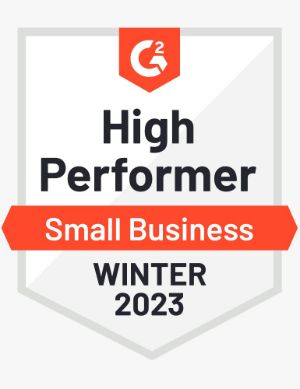This blog is a summary of the webinar from Interviewer.AI & Qapita on July 26th, 2022 on hiring and retaining top talent during a market downturn.
With the uncertainty and volatility of the current market, startups across Southeast Asia and the world are re-evaluating their hiring, fundraising, and expansion plans. Investors and boards are looking at companies more critically, asking them to use their funding more efficiently. For companies looking to not only survive, but thrive in the current climate, how should they use emerging technologies for their hiring needs? How can startups use ESOP to attract and retain top talent during today’s economic outlook?
Interviewer.AI Co-Founder and CEO Sunny Saurabh and Qapita Head of Equity Amit Majumder analyzed and discussed these questions in detail during a webinar collaboration between Qapita and Interviewer.AI.
Market Downturn Emerging Trends
The recent market downturn has produced several significant trends, the most notable being seeing which of the opposing trends of hiring freezes and layoffs versus the war on talent will prevail. Several other trends include.
- Crypto and Fintech have been hit the hardest
- The big five tech giants (Apple, Google, Microsoft, Amazon, and Meta) have slowed down hiring
- There are over 4,000 tech startups in Singapore today (versus 1,000 in 2014) to easily absorb any surplus talent that might be available
Lingering Effects of the Pandemic
When the COVID-19 pandemic broke across the globe, the traditional work setting got disrupted as more and more people stopped going into work and began working remotely at home. Organizations invested time and resources into helping employees with equipment and environments that would make them more productive at home, including standing desks, large computer screens, and more.
After almost two years of working remotely, where work became an extension of an employee’s lifestyle, employees didn’t take too nicely about being forced to come back to work in the office. This led partly to the Great Resignation phenomenon, as individuals started valuing what’s really important in their lives.. They did not want to trade off the lifestyle they developed during the pandemic for going back into the office. Many people felt they had a better life while working remotely because they could spend more time with their family and their children.
When companies demanded employees return to the office, a growing trend emerged of individuals wanting to go more into organizations that were remote-friendly than large multinational companies that forced employees to get back to work. Startups and small businesses latched onto this trend and began hiring candidates from across time zones, allowing people to continue working remotely and maintain the lifestyle they developed during the pandemic. Bigger companies are struggling with this trend and the growing number of remote workers because of established work cultures and years of investment into physical infrastructures supporting on-site work practices, leaning in on hybrid working setup with coming to office at least once a week as the norm.
Young professionals just entering the workforce are becoming increasingly interested in working for startups. They are a legitimate choice for them because the culture and vision of startups sounds like a better fit and more aligned to their values of leading a purposeful life rather than slogging hours in the office, as their parents would have done. There is more flexibility and the opportunity to work remotely. This presents young professionals with the ability to find where they fit best and the opportunity to work with people across the globe.
Reassessing Organizational Goals and Efficiency
The market downturn and growing trends of remote work in the current climate require companies to re-evaluate their goals, efficiency, and infrastructure.
Setting Up Remote Team Culture
Companies must go back and rethink how to set up their organization to establish a culture for remote workers.
- In setting up a remote team culture, companies must create time zone pods so employees have a group of people they can constantly communicate and collaborate with to stay productive rather than wait for help from employees that are 12 hours behind their timezone. Having pods allows employees to communicate and collaborate with each other and establishes these connections without meeting in person.
- It is vital that companies organize frequent offsite meetings for employees to interact with each other in person and make connections with fellow employees. Even in a remote work culture, employees value these in-person gatherings.
- Before the pandemic, people were paid based on how much time they spent working in the office. But now, people crave flexibility and do not want to work every day from 9 to 6. Time commitment cannot be the currency for employment anymore. Employees should be compensated based on their value and productivity, not the number of hours they spend working everyday.
Efficient Hiring and Retention Processes
One of the biggest challenges that had emerged concerning hiring is that organizations, flush with venture money, were hiring too many people, more than they actually need. Venture capitalists were pushing companies towards growth at all costs and companies instinctually hired more people to achieve this goal. The current downturn has forced organizations to reassess hiring practices to be optimal and go after talent that they require to make/keep the business profitable. Hiring is now thought out and optimized for revenue and need of the hour, rather than having surplus employees to support future revenues as your company grows. Using asynchronous platforms and collaboration tools makes the hiring process more efficient and optimal.
One of the biggest advantages of hiring remote workers is companies have access to talent across the globe. Right now, more than 60% of the workforce is remote, proving that employees do not need to be in the office to complete their work. Requiring employees to come in while the pandemic still rages will lead to resentment and loss in productivity. Also, remote work is bringing to the fore that not all employees need to be hired on a full time basis. If employees are competent enough to complete their work in a couple of hours or several days, it is a waste of their time and talent to hire them on a full time basis.
Importance of People and Talent
As more and more companies transition to a remote work environment, organizations must refine their goals and values to thrive in a remote work environment, much like AirBnB has done. Emphasis should be placed on “skills” rather than job titles. Companies must determine in which areas employees excel and optimize their talent rather than try to fit someone into a job title. In the current climate, employees need to be seen as partners working towards a common goal. In that sense, everyone is an entrepreneur because everyone is adding value to an organization, rather than being paid to do a job.
Frequent Communication
Transparency is vital in remote work settings. Business leaders need to communicate often constantly whether it is via slack or email or at town halls / company virtual meetings. Knowing any news through external sources, especially when it has to do with bad news like layoffs leads to distrust, confusion, and lower productivity levels among employees that stay on.
Balancing Schedules
An important aspect of remote work is balance. Remote workers should divide their work day into asynchronous time and synchronous time to suit their lifestyle. Whether it is going for a jog, picking up kids from school, making lunch, or meeting a friend over coffee. Employees should be able to have that flexibility to organize their asynchronous time to their daily routine. This gives employees a balanced schedule with flexibility on when they work on particular tasks while giving them the opportunity to communicate and work with fellow employees. Dividing work between asynchronous and synchronous time also gives time back to the employees.
ESOPs
One way companies can show they value their employees is through employee stock ownership plans (ESOPs) and restricted stock units (RSUs). Using equity compensation in addition to a cash compensation that is competitive for their skill sets gives employees ownership and their growth is tied to the growth of the company. It is especially important to give generous ESOPs to early employees because they not only go on to head divisions within the company as the company grows, but they are sometimes able to impact the company beyond the scope of their role through their insight, knowledge, and discovery as they tackle a particular problem. By compensating employees with ESOPs, organizations can start thinking of employees not as just employees, but as partners.
Takeaways
There are several important aspects to hiring and retaining top talent in the current volatile workforce climate. With more and more companies shifting to remote work and more employees seeking remote positions, it is important to remember the following in order to achieve profitability and success in an organization with a distributed workforce:
- Set up a remote team culture
- Plan frequent offsite meetings for employees
- Divide work days between asynchronous time and synchronous time
- Give generous ESOPs to early employees
- Reward performance that has a large impact on the company
Qapita is a SaaS-Net startup with a vision of transforming how equity is managed and traded in private capital markets. Qapita’s software solution seeks to automate the equity management process for startups including workflows around CapTables, ESOPs, Due-diligence, and transactions. Qapita’s marketplace solution seeks to facilitate liquidity programs and secondary transactions. Qapita seeks to automate all processes for equity matters in private markets via its digital platform. Learn more about how Qapita can help your business.
Interviewer.AI is a technology platform purposely built to support Recruiters and HR teams in finding top talent for their companies. Interviewer.AI is a state-of-the-art video recruiting software that uses AI (Artificial Intelligence) to screen in advance and shortlist the candidates that meet the criteria set. HR teams use the software to make the recruitment process more efficient and shorten the hiring cycle. Learn more about how Interviewer.AI can help your business.
 Annika Wanger is a Junior at Butler University studying Marketing, Applied Business Technology, and Data Science. She is currently interning in Singapore for Interviewer.AI during the summer of 2022. Besides work, she is very interested in traveling, reading, and cooking for family and friends as hobbies.
Annika Wanger is a Junior at Butler University studying Marketing, Applied Business Technology, and Data Science. She is currently interning in Singapore for Interviewer.AI during the summer of 2022. Besides work, she is very interested in traveling, reading, and cooking for family and friends as hobbies.










